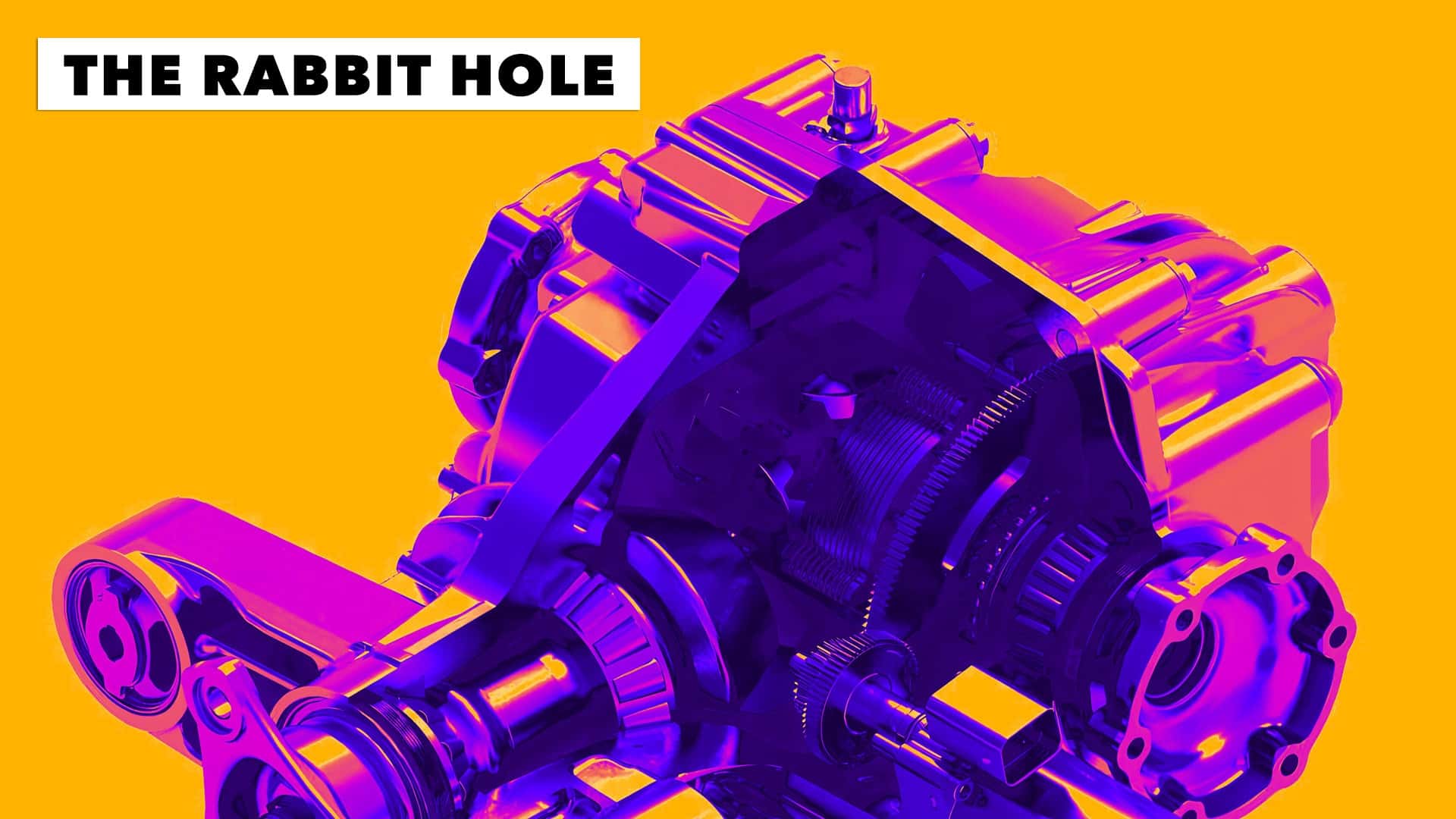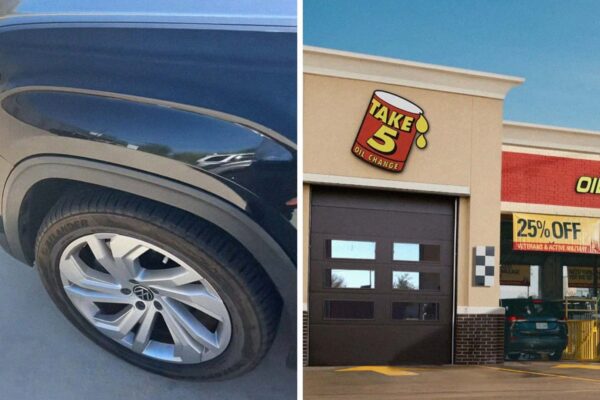A few years ago, I found myself in a familiar position as a car enthusiast: shopping for NA MIATA. My criteria were simple and typical-I want one of the most recent 1.8 liters (for additional torque), a rust-free structure (not in the northeast), guide (DuH), and limited scales. Traditional enthusiastic wisdom is that you always want LSD, but at that time, I couldn’t completely tell you about the reason.
I knew that the LSD helped you do the big ships and drifts, and helped you put the salad on the floor. But this was about that. Flash forward five years, and I now know that LSD does much more. It is one of the most important ingredients when it comes to treating vehicles in general.
Welcome to RabbitA column every two weeks, where a great editor Chris Berkins explores his latest car obsession with car technology. He talks to the best work to understand how cars work and how the future of cars looks.
First, a quick review of changes. The “open” difference, which is the most common type in cars, allows the wheels connected to rotation at different speeds. This is useful because, when turning, the internal and external wheels follow different arches, and thus rotate at different speeds. Without differentiation, the turns are very difficult. This is why the difference precedes the car itself in reality.
The closed difference is useful, though. Locking the rear wheels together, forcing them to rotate at the same speed, helps to generate traction. This is good in a straight line, and in the conditions of low turns, especially when the wheel is on a very slippery surface and the other is not. For this reason you will see the closed differences in Dragsters, and the sinking of the differences-as is the case in the difference that can be open or completely closed-on off-road.
The open difference is good in the vast majority of regular driving scenarios. On average, Toyota Camry does not need LSD, but in some cars, especially in performance applications, it is really useful to have a difference that blocks the gap between the two parties.
TORSENTONTONTONTORTONTION MAZDA RX-7.
Photo by: Mazda
LSD allows the paid axis to rotate at different speeds, but it also allows some amount of lock factor between the two. LSDS in the area plays between 0 and 100 percent of the conjugation, the place where the real magic occurs.
The first LSDS in production used multi -panel clutch to lock the output on either side in certain operating conditions. Here, the lock factor is determined by the number and direction of the clutch panels, and the clutches of the pre -download system are shared.
LSD is a liquid that is involved in clutch tablets during high temperatures under pregnancy. LSD uses a torque sensor (Torsen) gears that are gradually cleared while increasing torque. Finally, LSD uses an electronic motor to press clutch packages.
I can deeper here in all these types of LSD, and the other rare species, but I will save it for another day. This will be a very long story otherwise.
Today, I am more interested in talking about dealing with vehicles than the details of how LSD works. (There are a lot of videos found there are details of this, or if you like to read, I recommend heavily The dynamics of the race car vehicle To get an explanation of the topic and a large set of other elegant things.)
For the purposes of this story, though, know that there are three types of LSDs in terms of imprisonment: LSDs in one direction just runs under acceleration; LSDS 1.5-way operates under acceleration and partially modified it; LSDS dual -direction works on both acceleration and volunteering.
(It should be noted that the terms of strength and acceleration are used to exchange to describe what LSD does when they are in suffocating, as well as terms, coasts, and transgression to describe what LSD at any time is outside the suffocating.)
Photography: Cadillac
What helped me get to know LSDS of all types was diving in E-Lsds of GM, which constantly adjusts the lock factor to achieve different results. I spoke with Ron Morris of General Motors, who is controlling the Corvette and Cadillac, and not by chance a useful driver on the right track.
“If you want to draw the E-LSD conjugation on the graph, Morris explains,” begins with a really high association under the rectum, then slowly bleeds to the top-almost follows the car’s speed to be honest-and then it increases again from the angle. “
Let’s get this a little. LSD Locking helps the rectum maintain the stability of the car. Remember that it is mainly impossible to run a car with a fully closed. Forcing the paid wheels to rotate at the same speed creates a party below the border. But here, where the straight stability is the key, the presence of a little discount lock is a good. Morris uses the YAW term damping and tells us that, usually, in Cadillac Blackwing, they will manage about 50 percent of the conjunction of difference.
This damping is useful in the first brake application as well, as you don’t want the back of the car to start roaming under it at three -numbers speeds. But while the speed bleeds, things become more interesting.
“While the brake pedal is rolled and heads to the angle, frankly, 90 percent of the magic occurs with GM E-LSD,” Morris says.
Photo: Jeff Perez / Motor 1
General Performance cars in General Motors contain a system called PTM (Powertrain) system, Magneride actresses, ABS, and of course E-LSD-to help you go faster around the path. Even the performance car in a regular driving position must be designed for safety above all.
When you use one of the five PTM modes, you mainly connect an implicit agreement you are on a path, you know what you are doing, and you want the car to help you find the speed. E-LSD plays a big role.
Racing drivers talk about rotating a lot, essentially, what they describe is the ability of the car (and their ability to obtain the car to bend in an angle. This is technically, as the rear tires are on a wider path of fronts, although the type of smoking is not the anti -smoking frames.
Purifying the trail, bleeding from the brake pedal and you go below the top, helps the car axis in the corner. LSD that works under slowing is another help. E-Lsd is better.
“While this clutch only opens the appropriate amount while you dive into a corner, we can really contact the call so that you can polish it in the corner with confidence,” Morris says. “It does not come out of you, just as it does not pay and believes very badly. It is a driver’s directed path, only this correct amount of magic rotation. This is where a large amount of engineering time is spent.”
By the time you reach the top, you want to lock the difference in or about zero, because when you want to rotate the most able. Once you start returning to power and relaxing in the guidance, although you want the difference to go.
Photo by: Porsche
It is possible that the return to the suffocating is established in a front or large wheel car, as the car pushes to the tracking point. However, in a rear wheel car, it is very easy to overwhelm the back tires on the suffocating and generate the time of buildings. A little differentially added lock in all cases helps to return the car directly and add stability. After that, the course can repeat itself.
Electronly or not, it becomes clear that the limited and engraved difference is a powerful tool.
“I think many people think about it as an effort to wander. It is clear that it helps (the corner exit), but it is a strong operator for the balance of the car,” Morris. “Entering the angle, lack of stable condition, those types of things.”
E-LSD opens more interesting possibilities because it can interact with other vehicle systems. This is the brilliance of the GM’s PTM – engineers have many different cranes that they can withdraw to achieve the required dealing feature based on what the driver and the frame want. This means that Morris cannot work in a silo. It should be in the simulation device and in the path with other engineers to find out any arms that you pull when, and the amount of the amount.
The presence of E-LSD also affects the choice of devices as well.
Photography: Cadillac
“Maybe we will choose a more aggressive tape to combat the roll because we can now use the E-LSD-I don’t even want to say reducing the comparison, but getting rid of it completely,” said Morris. “It is no longer a barter to have a more aggressive choice for vehicle devices because we can now use DIFF to install the car where it should be, and allow this device to rotate the car where we want it.”
It should also be noted that ABS can mimic the LSD effect, by brakes for an individual wheel to help create a moment of Yao. But Morris indicates that this is ineffective because you wear and heat the brakes, and waste the engine power.
In the end, I bought Na Miata. My father found one local to a hometown was clean and cheap, and the seller claimed that he had LSD although he was a low -cucumber car that will not come with one of the factory.
My father tried to check this fact by placing two tires on the garage floor, which seemed to prove it. But I once did a single disturbance of the tires … which seemed to prove that he had an open difference.
Frankly, it does not matter. Knowing what I know now, there is no way to appreciate it.



